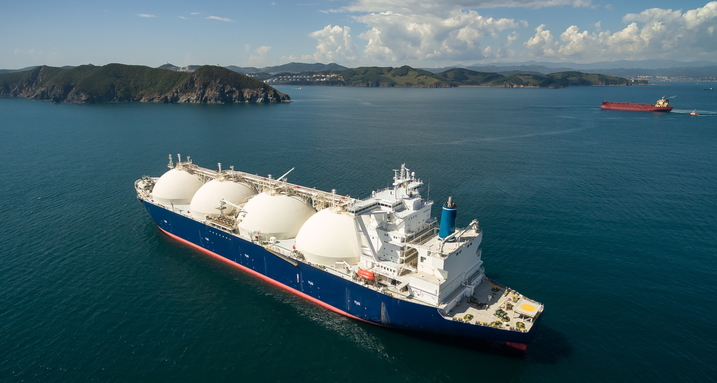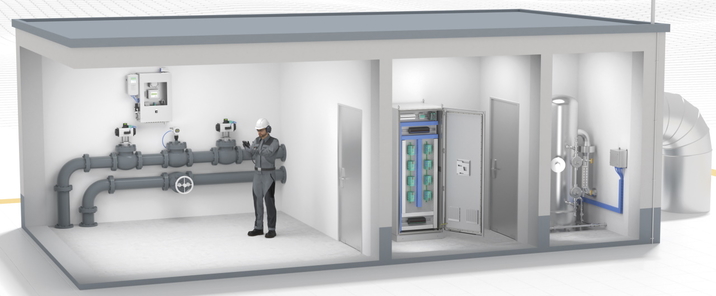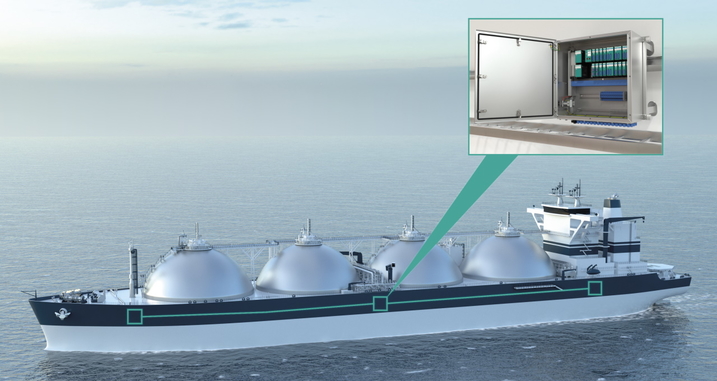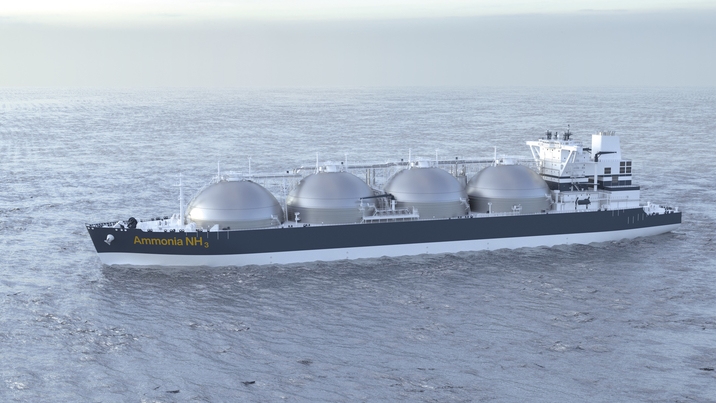Hydrogen Transport

Transporting hydrogen is technically demanding. Not only because hydrogen reacts explosively with oxygen above a certain mixing ratio, but also because it must be compressed for transport. Gas pressure regulating and metering equipment (GDRMA) regulates and measures the pressure of the hydrogen for further transport, therefore ensuring that neither negative nor positive pressure occurs.
Transportation by Land

Due to the risk of explosion, a variety of Pepperl+Fuchs products designed for hazardous areas are suitable for these systems. For example, the 6000 Series purge and pressurization system can reliably protect hydrogen analysis equipment from explosive atmospheres. Various interface modules from Pepperl+Fuchs are an ideal solution for safe signal transmission and protection against overvoltage in the control cabinet of the GDRMA. A terminal box from the SR series ensures intrinsically safe distribution of the signals. To prevent overvoltage directly at the field device, surge protection modules from Pepperl+Fuchs are also used. In addition, inductive sensors provide position feedback at the valves of the gas pressure control and measuring equipment.
Transportation by Sea

If hydrogen is transported on a gas tanker, explosion protection must also be ensured. The Pepperl+Fuchs product portfolio for hazardous areas offers a range of solutions for hydrogen transport by sea. For example, the FB remote I/O system, installed in an SR Series enclosure, is ideally suited for connecting the field signals on the ship. For reliable control of the crane on the gas tanker, a flanged Ex de solution is available, combining an enclosure in the "flameproof enclosure" (Ex d) type of protection with the advantages of the "increased safety" (Ex e) type of protection. This means that components not suitable for the hazardous area can also be used safely on the gas tanker for crane control, while certified operating elements are easily accessible in the Ex e enclosure.
Transport in the Form of Ammonia
Due to its low energy density, marine transport is not the ideal solution for pure hydrogen. It is therefore usually transported in the form of a derivative, i.e., in combination with another substance. Ammonia proves to be a suitable derivative here for various reasons: firstly, the energy density of ammonia is much greater than that of hydrogen, and secondly, several million tons are already transported by ship each year. After transport, the ammonia is split into water and nitrogen in a cracking process.

Since ammonia is an explosive substance, appropriate measures are required to protect people and the environment. Pepperl+Fuchs contributes to explosion protection not only on the gas tanker, but also at ammonia terminals with various products and solutions. The modules of the proven K-System with power rail support the safe unloading of the transport ship. At the tank farm, the Ethernet-APL rail field switch ensures fast and at the same time safe data transmission. During cracking, i.e., the splitting of ammonia into hydrogen and nitrogen, the modules of the H-system contribute to the safe operation of the cracking plants.








 +61 3 9358 3400
+61 3 9358 3400